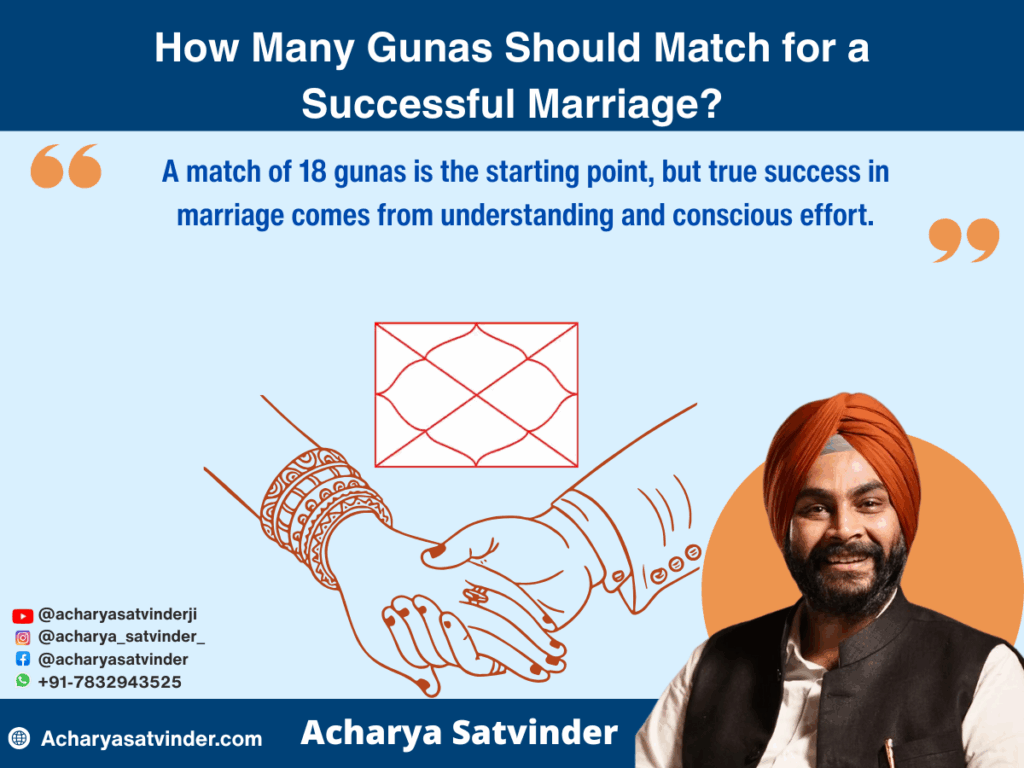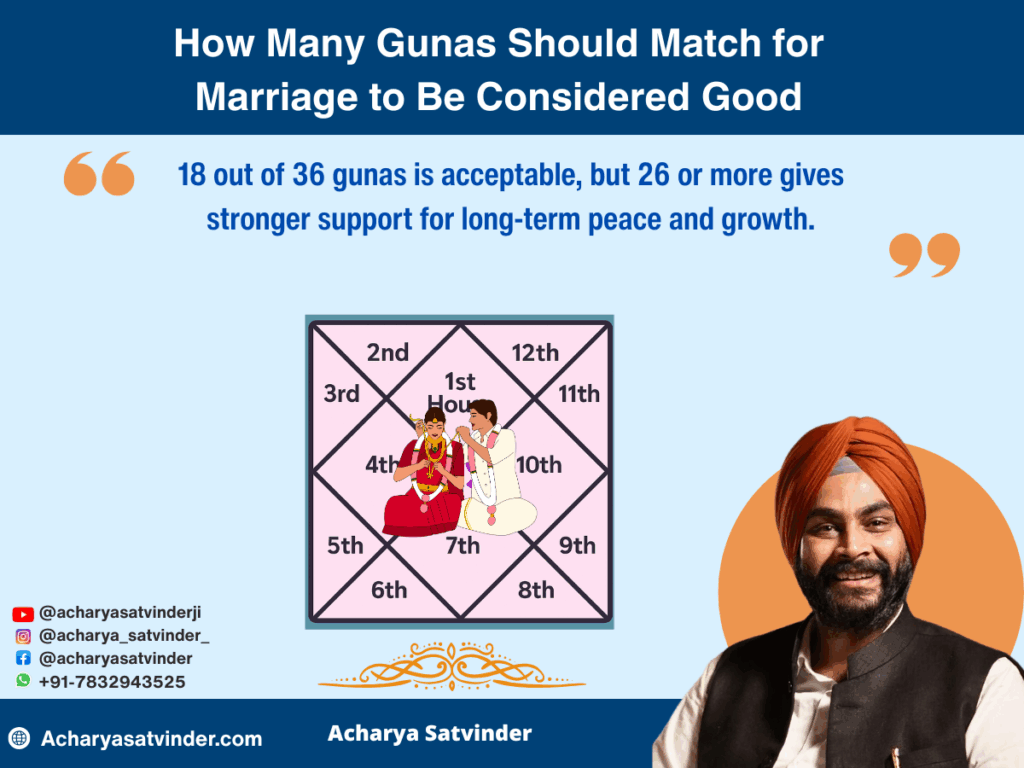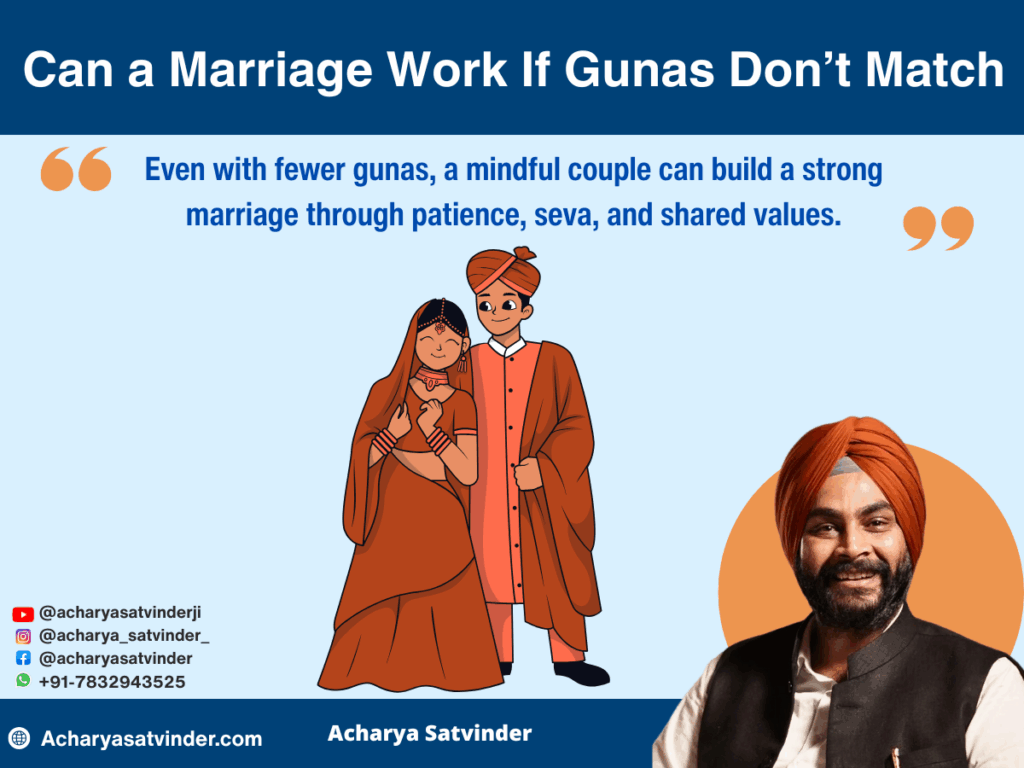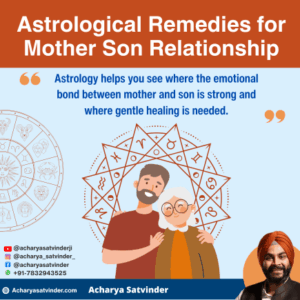Marriage is a big decision, and in Vedic astrology, one of the tools used to guide this decision is Guna Milan. But how many gunas should match for a successful marriage? And what does that really mean for the couple’s future?
This article explains the Guna Milan system in simple words, shows how the scoring works, answers common questions, and gives real insights that can help couples understand whether their match is aligned—not just astrologically, but spiritually too.
How Many Gunas Should Match for a Successful Marriage and When to Look Beyond Numbers
Guna Milan is the process of comparing two birth charts to see how compatible a couple is for marriage.

It is based on the Ashta Koota system, which looks at eight key areas of life that affect a marriage—like health, mindset, emotions, behavior, and overall harmony.
This system gives a total score out of 36 points. The more points a couple scores together, the more astrologers consider them a compatible match.
But scoring is just one part of the story. Real understanding comes when you look deeper into what each Guna represents.
Understanding the 8 Gunas in Marriage Matching
Each of the eight Gunas has its own meaning and point value. Together, they help evaluate different aspects of the relationship. Let’s go over each of them in a simple way.

Varna – Spiritual and Mental Compatibility (1 Point)
Varna compares the spiritual level and thinking style of both people. If they have similar values and beliefs, this gets matched. It helps in making decisions and solving problems together.
Vashya – Influence and Flexibility (2 Points)
Vashya checks if one person tries to dominate or if both are flexible. For example, if both people are naturally cooperative, this Guna supports peaceful decision-making in marriage.
Tara – Destiny and Well-being (3 Points)
Tara shows if their birth stars support each other. It reflects overall health, luck, and longevity of the relationship. A good Tara match means both partners bring supportive energy into the marriage.
Yoni – Physical and Emotional Connection (4 Points)
Yoni focuses on attraction, intimacy, and comfort in the relationship. It shows whether there is a natural pull or understanding at a physical and emotional level.
Graha Maitri – Mental Connection and Friendship (5 Points)
Graha Maitri checks how well both people’s minds connect. If they are mentally compatible and can be friends, this Guna helps the relationship grow through understanding.
Gana – Personality and Nature (6 Points)
Gana represents the temperament of both people—whether they are calm, aggressive, or spiritual. Matching Ganas helps reduce conflict, especially during tough times.
Bhakoot – Financial and Family Growth (7 Points)
Bhakoot tells us how the couple will grow emotionally and materially. If Bhakoot matches, it supports a stable home, career, and family life.
Nadi – Health and Reproduction (8 Points)
Nadi is the most powerful Guna, with the highest score. It reflects health and the possibility of having children.
A Nadi mismatch, known as Nadi Dosha, is usually taken seriously in traditional astrology.
You Might Also Like
- Navamsa Chart Importance in Marriage
- Reasons for Delay in Marriage as per Astrology
- How to Remove Manglik Dosha of Girl
- Best Online Matchmaking Astrologer in Canada
How Many Gunas Should Match for Marriage to Be Considered Good?

Now that you understand what each Guna means, let’s talk about the numbers.
Astrologers use the Guna Milan score to decide if a couple is suitable for marriage. But what is the right score to aim for?

Consult Acharya Satvinder Ji to understand your Guna Milan score and receive clear Vedic guidance for a successful and spiritually aligned marriage. To book a session, visit the contact page or simply send a WhatsApp message using the button below:
Minimum Required Guna Score
A total of 18 out of 36 gunas should match for marriage to be considered acceptable.
This is the bare minimum. Anything below 18 usually means major differences in health, mindset, or lifestyle, and astrologers may advise caution.
Guna Score Ranges with Examples
Let’s break down the scores with simple examples:
- Below 18 Gunas: A couple scoring 16 out of 36 might have strong attraction but frequent misunderstandings, or health differences. This could make the marriage unstable unless other aspects in the chart are strongly positive.
- 18 to 24 Gunas: This range is considered average. For example, a couple with 21 gunas matched may need to work on emotional expression or communication but have a good chance of building a strong bond through mutual effort.
- 25 to 32 Gunas: This is a good match. For instance, a couple with 28 gunas matched will likely enjoy emotional balance, shared goals, and supportive family dynamics.
- 33 to 36 Gunas: This score is rare and reflects very high compatibility. Even here, effort is still needed, but many life challenges are naturally smoother when compatibility is strong.
So, if you’re wondering “is 26 out of 36 guna match good or bad,” the answer is—it’s good and considered safe by most astrologers.
Why Nadi and Bhakoot Are So Important in Guna Matching
Some Gunas carry more weight in terms of results in daily life. Among these, Nadi and Bhakoot are the most sensitive and need careful attention.
Nadi Dosha and Its Impact
Nadi carries 8 points, the highest in the chart. If there is a Nadi Dosha (meaning both people have the same Nadi), it may be seen as a sign of poor health connection or issues related to children.
However, in some cases, experienced astrologers find exceptions—like strong planetary positions elsewhere—which reduce the impact of this Dosha.
Bhakoot and Emotional Security
Bhakoot carries 7 points and is connected to prosperity and emotional peace.
A mismatch here may bring stress, misunderstandings, or slow financial growth. Even if a couple matches 28 gunas, Bhakoot Dosha could create tension if not addressed.
Can a Marriage Work If Gunas Don’t Match?

This is one of the most asked questions—what if the gunas don’t match, but the couple still wants to marry?
The Role of Spiritual Awareness and Maturity
According to Acharya Satvinder Ji, the success of a marriage depends more on personal growth, discipline, and mutual care than on a number.
Guna Milan helps understand the possible directions of life, but it doesn’t write the full story.
There are many real-life examples where couples with low Guna scores have long, peaceful marriages.
For example, a couple scoring 17 gunas had strong family support, shared spiritual practices, and open communication. Their connection grew because they were mindful and respectful toward each other.
This proves that while the guna milan score offers insight, your own choices and awareness decide the journey.
Real Remedies That Strengthen Marriage Beyond Gunas
When a couple faces concerns like Nadi Dosha or low scores, many turn to totkas or gemstones.
But these are not supported by the Vedic scriptures. Instead, Acharya Satvinder Ji recommends conscious spiritual practices that actually build strength in life and marriage.
Naam Simran (Mantra Chanting)
Chanting God’s name helps calm the mind and reduce emotional reactions. It builds inner peace, which is essential in any marriage.
Daan (Charity)
Charity softens karmic patterns. Donating with a selfless heart, especially on important days or in the name of your marriage, helps bring positive change.
Seva (Selfless Service)
Doing something for others without expecting anything in return makes couples more grounded and humble. It improves the way partners treat each other at home too.
Discipline in Daily Life
Simple habits like waking up early, planning your day, eating with mindfulness, and speaking with kindness create a positive flow in relationships.
These are not just remedies—they are life practices that bring stability beyond any guna score.
Final Thoughts
A minimum of 18 gunas out of 36 should match for a marriage to be considered acceptable in Vedic astrology.
However, a score of 26 or above is ideal and reflects a stronger alignment in core life areas.
Still, remember that guna matching is only a guiding light. True joy in marriage comes from spiritual depth, shared values, and the way you walk your path together.
Whether you match 18 gunas or 28, what truly matters is your commitment, inner awareness, and willingness to grow.
If you are wondering how many gunas should match for a successful marriage, the answer lies not just in astrology but in how well you understand, support, and uplift each other every day.
Let Vedic wisdom guide you—but let your actions shape your journey.
FAQs
How many gunas should match for a successful marriage in Vedic astrology?
At least 18 out of 36 gunas should match for a marriage to be considered astrologically acceptable. However, a match of 26 or more gunas is seen as ideal for a harmonious and lasting relationship.
Is 21 out of 36 gunas match good for marriage?
Yes, 21 gunas is an average score. It indicates moderate compatibility. While it’s considered acceptable, couples may need to work on communication and emotional understanding for long-term happiness.
What happens if less than 18 gunas match?
If fewer than 18 gunas match, the couple may face higher chances of conflict or health issues, depending on which gunas are mismatched. A deeper Kundli analysis is advised before making a decision.
Is 26 out of 36 gunas match good or bad?
A score of 26 gunas is considered very good. It reflects strong compatibility across physical, emotional, and mental aspects, making it a suitable match for successful marriage.
Can a marriage succeed if gunas don’t match?
Yes, many marriages succeed even with low Guna scores. Success depends on mutual understanding, spiritual alignment, and shared values more than just numbers on a chart.
Which guna is most important in marriage matching?
Nadi, worth 8 points, is the most important. It affects health and children. Mismatches here cause Nadi Dosha, which must be analyzed carefully before marriage decisions.
Is Guna Milan enough to decide marriage compatibility?
No, Guna Milan offers a basic compatibility overview. It should be supported by full Kundli analysis, individual personality review, and spiritual understanding before final decisions.
What does 28 out of 36 gunas mean?
28 gunas indicate a very compatible match. It shows strong alignment in values, emotional bonding, and physical comfort, offering a solid foundation for a happy marriage.
Can love marriages ignore guna matching?
Love marriages may begin with emotional compatibility, but Guna Milan helps reveal deeper karmic or spiritual patterns. It’s wise to consult an astrologer for guidance, not judgment.
Is 16 out of 36 gunas match good or bad?
A score of 16 gunas is below the safe threshold. It suggests weak compatibility. Unless strong planetary support exists elsewhere in the chart, the match is generally not advised.
What is considered a good guna match for marriage?
A guna match between 25 and 32 is considered good. It usually ensures balance in emotional connection, lifestyle, health, and mutual respect—key traits for a strong marriage.
What is Nadi Dosha in Guna Milan?
Nadi Dosha happens when both partners have the same Nadi. It can affect marital health and childbearing. Though serious, some doshas are canceled by other positive planetary factors.

Acharya Satvinder is a spiritual guide and life mentor who blends Sikh astrology, philosophy, and coaching to help you find clarity, balance, and purpose. He offers personalized guidance for career, relationships, stress, and spiritual growth — empowering you to unlock your true potential.


